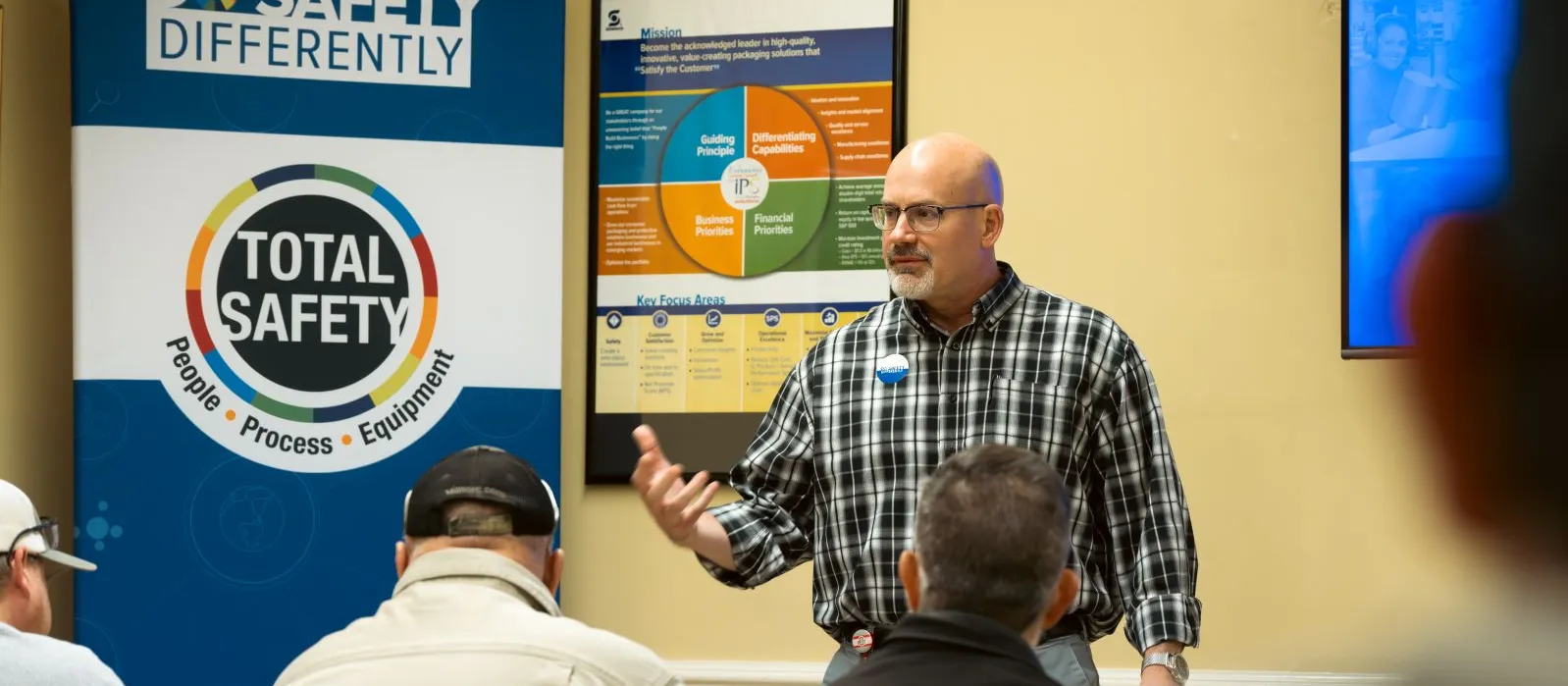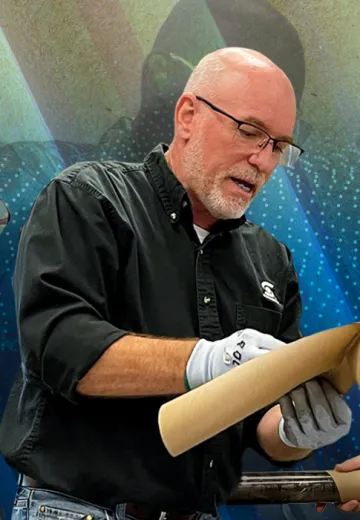Speaking up about safety concerns should be normal. So why do employees hesitate? Experts say employees may not feel safe to share their concerns.
When leaders value employee voices, people feel safe to share. They’re willing to take the risk to keep their team safe.
At Sonoco, we’re working to Do Safety Differently. We demonstrate trust in employees’ voices by helping them speak up about safety in these nine ways:
1. Create communication channels that all employees can access.
If we want employees to speak up about safety concerns, we need to provide channels for them to share. Here are a few we use:
- Designated safety coordinators.
- Routine conversations with supervisors.
- Facilitated discussions about exposures.
- An email address for sharing potential exposures or concerns.
- A safety improvement team.
2. Provide safety training to spread awareness.
Safety training is key. From executive leadership to plant workers, we want to ensure that each team member knows what safety looks like in their workplace. Proper training for us includes ensuring team members know how to…
Clarify what makes something a safety issue.
We refuse to assume everyone knows what safety looks like. By creating, publishing and discussing our safety vision, we can help keep everyone safe in the workplace and lessen hesitations about speaking up.
Make safety resources available to all employees.
When questions arise, we want employees to have easy access to answers—reducing or even eliminating delays. We’re working to help them speak up in real time with safety resources like…
- A safety coordinator for each workplace.
- A variety of online safety-based training courses.
- Safety technology (e.g., online Safety Data Sheets [SDSs]).
3. Create a reporting protocol that engages frontline workers.
Our goal is employee engagement. Why? We know that plant employees work on the front line, so they’re incredibly knowledgeable. Their thousands of decisions each day help to keep our global workforce safe.
We’re working to motivate employees to take ownership of being part of the solution. How? We base our reporting protocol on the severity of the incident. Reporting includes:
- Leaders communicating to their teams.
- Employee involvement in process improvement and risk-reduction plans.
- Follow-up after the incident.
- Recognition of those who speak up.
By listening to their thoughts, concerns and ideas, we’re investing in our workforce and building a culture of trust and communication.
4. Establish a practice of sharing appreciation for committing to safety.
We believe team members deserve to be rewarded for their commitment to safety. We look for opportunities to acknowledge their efforts in meaningful ways like recognizing their innovative solutions for safety risks with our Sonoco Awards and Recognition Program (or as we call it SOAR).
Last year, we recognized our Global Paper Products Converting plant in Subang, Indonesia for their safety innovation. Their cone machine gate frequently unlocked on its own. Plant team members identified that the gate’s lock couldn’t withstand the machinery’s forceful vibrations and created a solution. Their simple but impactful solution decreased downtime, removed this safety hazard and reduced lock replacement costs.
As a reward for their innovative thinking, the SOAR committee awarded this plant with a Gold Award—the highest award for Safety.
5. Commit to taking reporting seriously.
A safety culture instills trust. We want employees to speak up with confidence that their voice makes a difference. We signal their reports matter in these and other ways:
- Recognize individual contributions to safety improvements.
- Speak with a small group to share safety beliefs and personal experiences.
- Have leaders share their personal safety vision with their direct reports.
6. Ask questions that challenge established practices and listen for suggestions.
No policies, rules, etc. can impact employee safety more than a direct leader’s care and concern for their team. By focusing on safe work, we can engage employees and build trust on a deeper level than what a traditional, compliance-based approach offers.
Direct leaders can better engage employees by listening to the answers to questions that challenge practices and thinking like these:
- What challenge do you face while completing [insert specific task]?
- What is the least safe task you do and how would you make it safer?
- What tool, resource, etc. would help eliminate a risk you face every day?
7. Dedicate regular time to speaking up about safety.
Author Sam Goodman states:
“We must reframe the experience of ‘safety’ within our worlds—moving it from something we ‘do to others,’ to something we ‘do with others.’”
We believe investigating before an incident or failure occurs is key. But putting this into practice is hard if team meetings are the only time when employees can point out potential risks. Creating additional touch points between plant employees and plant management before shifts, after shifts, etc. helps.
8. Share how suggested safety improvements are making a difference.
Without an update or a follow-up conversation, employees may think their safety contributions are falling on deaf ears. That’s why we believe in closing the loop by...
- Personally thanking the employee for speaking up.
- Highlighting the specifics of their efforts.
- When possible, sharing data or stories that prove their contributions made a difference.
9. Share how leadership is committed to improving safety through specifics.
If we want to improve safety, we need to start at the top with executive leadership. Then, we need to share how leadership is practically prioritizing safety. For us, this looks like going into the details—sharing dollars invested, stories, safety vision statements, leadership workshops and more.
Every person is responsible for safety at Sonoco. Creating an environment where leaders value and trust employee input is not one task. Instead, it’s a product of many everyday actions. As our Safety mission statement states: “Sonoco is committed to maintaining a safe work environment that actively engages all employees in identifying, preventing and correcting workplace safety issues to reduce incidents and eliminate Life Changing Events.”




